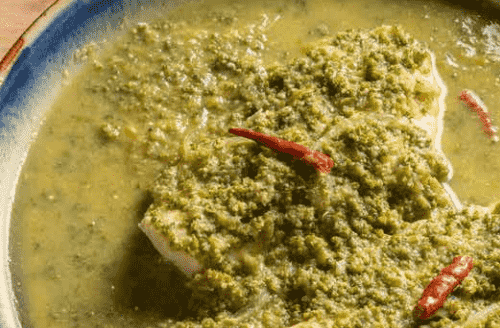Medicinally and nutritionally, Huauzontle is a rare treat
Huauzontle was a sacred and very nutritious plant used by the pre-Hispanic peoples of Mexico, and you should find out more about it.

The huauzontle is, like corn, one of the foods that Mexico contributed to the world. Its name means "bledo" or "hair-like stalk." It is mainly used to prepare Mexican dishes, with a special touch according to each region.
It is an erect herb with a very branched root. It has a furrowed stem, and the whole plant is covered with a kind of yellow powder. The leaves are alternate, triangular, wavy, and petiolate. The flowers are gathered in spikes with five greenish sepals. The compressed fruit contains reniform seeds with abundant albumen.
In short periods, the plant can withstand temperatures below freezing. This resistance to cold is of great importance, since it is especially in demand at Easter, to prepare huauzontle pancakes, for example. In terms of soil, it is very demanding: the soil must be fertile, deep, well-drained, slightly loose, rich in organic matter, and contain abundant nitrogen.
Sowing should be done in somewhat moist soil. The seeds are buried one to two centimeters deep and then raked to adhere to the ground. The furrows should be at a distance of 20 to 35 centimeters. Harvesting consists of cutting the most developed pods. In a crop, there are usually five or six passes. When the whole plant is to be sold, it is cut below the rosette of pods, about 10 centimeters above the ground. In this case, it is harvested only once.
The distribution of this vegetable is mostly done in tianguis and public markets. Guerrero, Tlaxcala, and Puebla have been, for years, the main producers at the national level, with Puebla being the one who contributes a little more than 90% of the total production of the country.
Nowadays, it is regularly cooked wrapped, and accompanied by green, red, chile pasilla, or mole sauces. Being an economical food, it is one of the options for those who want something more than fish and seafood during this Lenten season.
During the time of the Aztecs, this plant was boiled and eaten. When the Spaniards came, however, it was made illegal to grow because, along with amaranth, it was used in religious ceremonies that involved human sacrifices. This pre-Hispanic plant contains nutritional and medicinal properties derived from its calcium, iron, phosphorus, and vitamin A, C, E, and B complexes, which stimulate memory and contribute to the proper functioning of the brain.
Nutritional contributions and consumption of huauzontle
The leaves, branches, flowers, and seeds are consumed; it is eaten in mole, stuffed with cheese, in pie, in tacos, in pancakes, in pizza, with egg, or even in broth. Huauzontles have a high nutritional value, containing calcium, iron, phosphorus, and vitamins A, C, E, and B complex.

Fish Fillet in Huauzontle Sauce
1088 kcal, 6 portions, 1 hour
Ingredients
6 white fish fillets
1 kg of tomato
¼ of white onion cut in feathers
2 dried chiles de arbol
300 g huauzontle, cleaned and washed
Salt and pepper to taste
Lard to taste
Preparation
Cook the tomatoes and blend them in a blender with the cooking water. Place a little lard in a saucepan and sauté the onion and the chopped chiles. Add and sauté the ground tomato. Bring to a boil and season with salt and pepper. Add the fish fillets and wait for them to cook. Add the huauzontles balls and wait until they come to a boil. Place on a plate and bathe with the sauce




